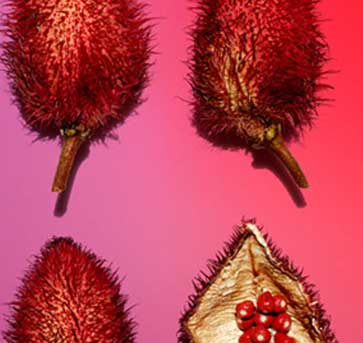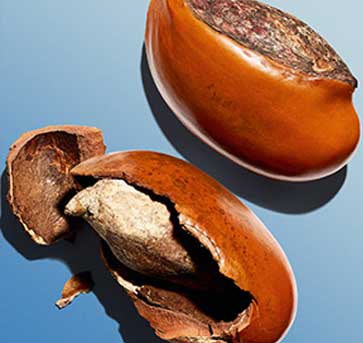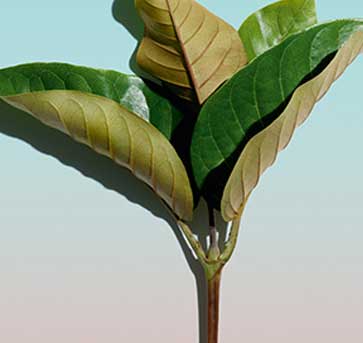Silicones, parabens, sulfates: we explain them all.
Wondering what the various ingredients that go into your skincare and make-up products really are? We value transparency, and have put together a quick guide. To be put on the market, all cosmetic products must comply with highly stringent international regulations. Most importantly, their ingredients must not be hazardous to human health. When deciding which ingredients to black list or white list, international regulations draw on scientific studies that are constantly being updated. Yet despite being authorized, some ingredients are controversial because of their impact on human health or the environment, such as silicones, parabens, and sulfates. Clarins pays particularly close attention to these controversies and is actively engaged in following new findings and conclusions released by health authorities. And even if they are authorized, Clarins aims to substitute these ingredients in its formulas, or limit them to the smallest possible quantities when no substitute exists. Let's take a closer look at the facts.
1. Silicones
INCI: Dimethicone; Dimethiconol; Cyclomethicone; Trimethicone; Cyclopentasiloxane and derivatives
Silicones are an extensive family of compounds used in make-up, skincare, and haircare formulas. Silicones are prized for their smoothing, filling, and mattifying effects, as well as for their pleasant, silky texture. The issue here is that two of them, cyclopentasiloxane (D5) and cyclotetrasiloxane (D4), have a negative impact on the environment, with build-up accumulating in waste water as a result of their high stability. Furthermore, cyclotetrasiloxane (D4) is also suspected of having harmful effects on human health. European cosmetics regulations restrict their usage to a concentration of 0.1% in rinse-off products. Because Clarins takes its environmental responsibilities seriously, the brand is committed to limiting the use of all silicones in its skincare and make-up products. Although a handful of existing make-up formulas may indeed contain cyclopentasiloxane or cyclomethicone, Clarins is actively working to find alternatives that create this silky texture in all new products.
2. Parabens
Noms INCI: nomenclature: Methylparaben; Ethylparaben
An extensive family of molecules, parabens are used in the food, pharmaceutical, and cosmetic industries for their preservative properties. These molecules help keep formulas intact and protect them from any potential contamination (bacterial, fungal, viral, etc.). Their downside? They are bad for your health. In response to this issue, a number of scientific studies have been conducted to verify the impact of parabens on human health, and demonstrated that two of them are perfectly safe: methylparaben and ethylparaben. Although cosmetics regulations prohibit the use of "long chain" parabens, they authorize the use of two "short chain" parabens: methylparaben and ethylparaben. Pressure from the media has resulted in Clarins opting to use two alternatives to these parabens in order to preserve its products. But because every formula needs to be tested and trialled in order to find the right way to preserve its benefits, Clarins may still need to use methylparaben or ethylparaben from time to time to ensure antimicrobial protection in some of its formulas.
3. Sulfates
INCI: nomenclature: Sodium laureth sulfate; Sodium lauryl sulfate
In cosmetics, sulfates stabilize formulas and create a luxurious foaming effect. The most widespread sulfates are sodium lauryl sulfate (SLS) and sodium laureth sulfate (SLES). Their downside? They can sometimes be irritating and manufactured via polluting processes. Cosmetics regulations authorize their use based on scientific studies that have demonstrated that in low concentrations, they are safe for human use. Although Clarins uses these certified no-risk concentrations in some of its products, the laboratories are actively seeking to replace them with substances created through "greener" manufacturing processes in order to limit their impact on the environment. Note: some "sulfate" ingredients do exist, such as zinc sulfate and magnesium sulfate, neither of which are SLS or SLES. These are used for other cosmetic purposes as active or base ingredients in formulas. They do not cause irritation and the way in which they are manufactured does not cause pollution. As a result, they are sometimes used in Clarins products.
4. Alcohol
INCI: nomenclature: Alcohol
Alcohol may sometimes be used in cosmetic products in ethanol form. It lends a refreshing coolness to products by evaporating upon application, allows some ingredients to be solubilized within the formula, and contributes to the preservation of the formula. Its downside? Alcohol can sometimes be drying or irritate the skin. Because Clarins' priority is developing quality products with sensory appeal that are safe for the skin, the brand only uses natural alcohol (distilled from beetroot and wheat) in its skincare and make-up products, at highly tolerable concentrations that do not lead to drying or irritation.
5. EDTA
INCI nomenclature: Disodium EDTA; Tetrasodium EDTA; Trisodium EDTA
Ethylenediaminetetraacetic acid, also known as EDTA, and its derivatives are used to ensure cosmetic formulas remain stable. Their downside? They have a negative impact on the environment. Although EDTA is authorized under international regulations, Clarins is working to replace it by studying new, more eco-friendly alternatives.
6. Phenoxyethanol
INCI nomenclature: Phenoxyethanol
Phenoxyethanol is an anti-microbial preservative that ensures cosmetics are kept fresh throughout their lifespan on store shelves and throughout their use. Incredibly effective at low doses, phenoxyethanol has been the subject of a number of scientific studies designed to green-light their safe use in cosmetic products. In compliance with the cosmetics regulations in force, Clarins uses phenoxyethanol to preserve its formulas.
7. Phthalates
INCI nomenclature: Diethyl phthalate
Out of the entire phthalate family, only one is authorized for cosmetic use: diethyl phthalate (DEP). It is used as an alcohol denaturant, rendering the alcohol used in fragrances unfit for human consumption. The issue with this family of chemical compounds? They have carcinogenic and mutagenic effects and can be toxic to reproduction. It has nevertheless been proven that DEP poses no risk to human health. As a result, the regulations in force authorize its use in cosmetic formulas. Yet despite this authorization, Clarins does not use phthalates of any kind in its formulas, including DEP, and chooses to use a different denaturant: ethylene brassylate.
8. Endocrine disruptors
According to the World Health Organization, as its name suggests, endocrine disruptors are substances that can impact one or several endocrine system functions, resulting in harmful effects on human health. To date, there is no official list of endocrine disruptors recognized and published by the European Commission. However, if an ingredient is shown to act as an endocrine disruptor, it goes on to be prohibited for cosmetic use. Because Clarins cares about its consumers' safety, the brand selects its ingredients and formulas in compliance with the very latest regulations and actively monitors all new toxicological findings in order to avoid using ingredients that are identified as being endocrine disruptors.
9. Mineral oils
INCI nomenclature: Paraffinum liquidum; Paraffin; Synthetic wax; Cera microcristallina/Microcrystalline wax; Ozokerite; Ceresin; Isododecane; Isohexadecane; Hydrogenated polyisobuten; Hydrogenated didecene
Liquid paraffin, Vaseline, Vaseline oil, mineral waxes: all are part of the extensive family of mineral oils. A ubiquitous ingredient in the pharmaceutical and cosmetic industries thanks to their emollient properties, mineral oils are excellent for creating texture and hydrating the skin. As with all ingredients authorized under cosmetics regulations, mineral oils have been the subject of numerous scientific studies to demonstrate that they are perfectly safe for human use. Their downside? They are a by-product of the polluting oil industry. Some existing Clarins products may contain mineral oils. But because the brand takes its environmental responsibilities seriously, Clarins is actively seeking alternatives for all new products released.
10. Sunscreens:
INCI nomenclature:
Chemical/organic sunscreens:
Butyl methoxydibenzoylmethane, Ethylhexyl methoxycinnamate, Ethylhexyl Salicylate, Polysilicone-15, Homosalate, Octocrylene Mineral sunscreens: Titanium dioxide, Zinc oxide Sunscreens are a large family of ingredients capable of protecting the skin against the sun's harmful UVA and UVB rays. These sunscreens are available in chemical (also called organic) and mineral forms, and play a key role in public health as essential ingredients to be included in sun-protection products. We choose the sunscreens used in our cosmetic products in line with official lists of sunscreens authorized under different sets of international regulations. These official lists differ from one country to the next, and are based on a number of regularly updated scientific studies designed to demonstrate their safety for human health and their effectiveness in protecting the skin against UV rays. Their downside? There is cause to believe they may be endocrine disruptors or carcinogenic, and they are suspected of polluting the oceans and posing a threat to marine species. Sunscreen is one of the most commonly studied cosmetic ingredients in the scientific community. Taken in their entirety, the studies have not demonstrated that authorized sunscreens have the potential to act as endocrine disruptors or carcinogenic factors in human health. With respect to their environmental impact, and more specifically their impact on the oceans and marine wildlife, it is difficult to accurately assess the situation and gain a consensus, in the sense that no norms or standards have been established by which to gage the situation. Consumer health is Clarins' number-one priority, and the brand consistently reiterates the importance of protecting your skin from the sun in order to safeguard your health. This is why it is crucial to apply sun protection before exposure, and to reapply at least every two hours and after every swim. In compliance with the different international regulations, Clarins uses different authorized chemical and mineral sunscreens in its sun protection products, all in doses deemed safe for human health while ensuring optimal protection levels. The protective effectiveness of all Clarins sun care products is rigorously tested before being put on the market by independent laboratories using the methods required by the regulations in force. And because Clarins cares about the planet, the brand uses the minimum amount of sunscreen needed to effectively keep the skin protected.
11. Titanium dioxide
INCI nomenclature: Titanium dioxide
Titanium dioxide is a mineral compound found in nature. In its processed and purified form, it is one of the most widespread substances used around the world, particularly in the food, pharmaceutical, and cosmetic industries. In cosmetics, it can be used as sunscreen to protect the skin against the sun's harmful UV rays. International regulations authorize its use for this purpose, and it is one of just a handful of authorized sunscreens. It can also be used to bleach and whiten cosmetic formulas, and as a result, it can be used in make-up to create "brightening" or "light-reflecting" effects. Its nanometric form is preferred for improved dispersion in the product, depending on the desired formula. Its downside? Precisely that is nanometric form makes it easier for it to be absorbed into the body. Use of titanium dioxide nanoparticles is expressly authorized by different international regulations based on toxicological assessments that have established percentages of use in sun protection products that pose no risk to human health. Consequently, Clarins authorizes the use of titanium dioxide nanoparticles in its sun care products and, as required by European regulations, indicates the term [NANO] after the name "titanium dioxide" in the ingredient lists printed on its products.
12. Plastics
INCI nomenclature: HDI/Trimethylol hexyllactone crosspolymer; Nylon-12; Methyl methacrylate crosspolymer; Polymethyl methacrylate; Polyethylene; Vinyl dimethicone/methicone silsesquioxane crosspolymer
The term plastics encompasses a wide range of polymers that can be either synthetic or natural, all of which come in a variety of forms: films, fibers, glitter, powders, gels, etc. They are used in a large variety of industries such as design, furniture, food packaging, and cosmetics. Because of their suppleness and flexibility, plastics can be molded, extruded, pressed, and worked into a range of different shapes that allow for a number of different effects with varying degrees of transparency, resistance, suppleness, and elasticity. In cosmetics, different types of plastics can be used depending on their specific properties. Until recently, plastic micro-beads (particles measuring over 5mm across) were used as exfoliating ingredients in scrubs. They are now expressly prohibited by European cosmetics regulations. Plastic-based powders, however, are authorized for use in make-up and skincare products for their soft-focus or filling effects. Plastic gelling agents can also be used to create texture and to give formulas a pleasant silky feel, or 'slip'. Their downside? Non-biodegradable plastics pollute the environment by accumulating in build-up. Because Clarins takes its environmental responsibilities seriously, the brand removed plastic micro-beads from all its exfoliators well before they were officially banned by cosmetics regulations, choosing instead to focus on natural alternatives (cellulose micro-beads, lava powder, sugar and salt crystals). In addition, although Clarins may sometimes use plastic gelling agents and powders in its skincare and make-up products, the brand always complies with the regulations in force and strives to limit their use by actively researching alternatives that create the same sensory effects and textures.







